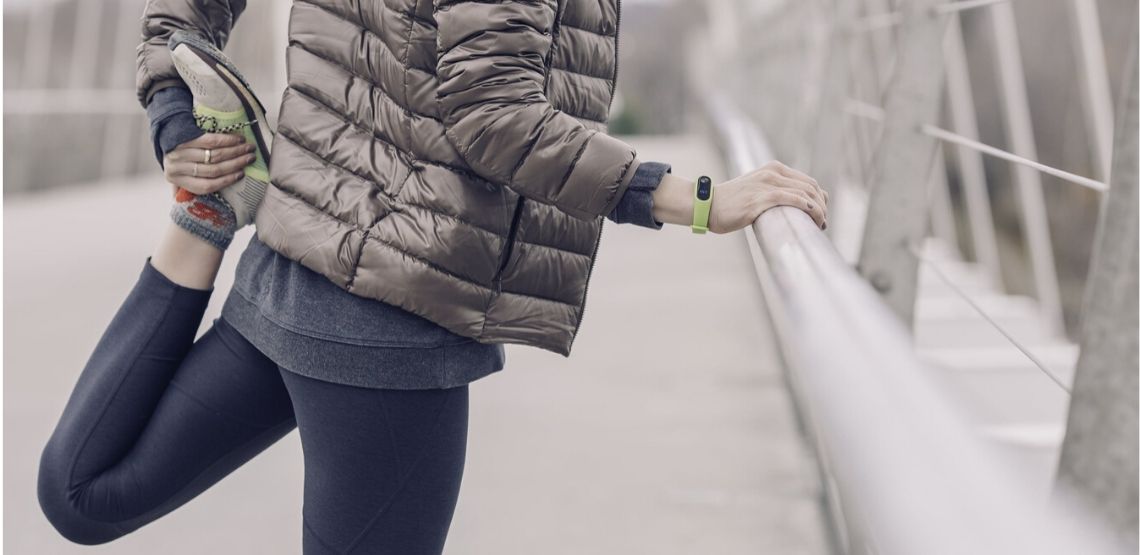Exercising in Cold Weather: Everything You Need to Know
Just because the temperatures are frigid, doesn’t mean your workouts should be put on hold. It’s human nature to want to bundle up and hibernate the winter months away, so if you find your motivation waning, you’re not alone. However, exercising in cold weather is an invigorating way to keep your body healthy and spirits high during the dreary winter season.
While indoor exercises like your gym routine, running on the treadmill or group exercise classes won’t be affected much by the dropping temps, it is important to treat any outdoor workouts a little differently when it’s cold outside.
Here’s everything you need to know about exercising in cold weather safely and effectively.
Safety Tips You Need to Know
Before starting any new exercise routine or doing your regular workouts in the cold, be sure to consult your doctor if you have any medical conditions such as heart or respiratory issues that could be worsened by extremely cold temps. For example, you can read about how to exercise safely with asthma here.
No matter how fit you may be, it’s important to be cognizant of the weather conditions. When exercising in cold weather, keep an eye on the forecast and wind chill. When you’re breaking a sweat and working hard, it’s easy to not realize how truly cold it is.
Dressing well becomes more important when exercising in cold weather. Layers are your best bet, that way you can discard clothing as you heat up or add them back if you find yourself getting cold. Choose sweat-wicking, dry-fit clothing (not cotton) to wear against your skin. Next, layer in fleece to keep your body temperature stable, adding a final outer layer that you can remove if need be. Make sure to also protect your extremities (hands and feet) and keep your head covered in a warm hat.
Lastly, just because it’s cold, don’t assume you’re immune to dehydration or sunburn. In fact, while we tend to associate them with hot temperatures, both dehydration and sunburn are more likely to sneak up on you in the colder months. Make sure to hydrate before, during and after your workout. Wear sunscreen on any exposed skin when exercising outdoors. You also may want to slather on some moisturizer, lotion and lip balm to keep skin moisturized.
Related Search Topics (Ads)
When Is the Cold Too Cold?
If conditions are really frigid, under five degrees Fahrenheit, the risk of frostbite becomes something you need to consider. And if temperatures outside drop lower than zero degrees Fahrenheit (considering the wind chill, so again, keep an eye on that number,) it’s probably too cold to safely workout, so head indoors. When exercising in cold weather, stay on the alert for early warning signs of frostbite, like numbness or a loss of feeling, usually in your hands or feet (but it can occur on any exposed skin). If you suspect frostbite is coming on, get out of the cold as soon as possible first things first. Also, resist the urge to try to warm yourself up by rubbing your skin, which can damage frostbitten skin.
If you experience extreme shivering or a feeling of drowsiness and lack of coordination, get medical help right away — it could be warning signs of hypothermia.
Some Ideas for Exercising Outdoors in Cold Winter Weather
Ready to get moving and start exercising outdoors this winter? Here are a few ideas for great outdoor workouts to burn calories and get your heart rate up:
- Running or jogging
- Brisk walking
- Playing a game of tennis
- Biking
- Skiing or snowboarding
How to Properly Warm Up and Cool Down
There’s no time of year when you should be skimping on proper warm-ups and cool-downs, but it becomes even more critical when exercising in cold weather. Why? Working cold muscles can result in sprains, strains and other injuries.
Taking a few minutes to increase blood flow and warm up cold muscles is a non-negotiable step. Choose dynamic warm-ups where you’re moving and active, versus slow, controlled movements. Think walking lunges, circling your arms forward and backward, pulsing squats and jumping jacks to get your body and joints warmed up before you work them out.
At the end of the workout, resist the urge to jump straight in the shower — take a few minutes to cool down gently with light aerobic movements and slow stretches that you hold for longer (as opposed to the dynamic stretching warm-up). This doesn't need to be done outside as well, you can easily do this once back indoors. Make sure your muscles get some much-needed TLC before moving on with your day.


